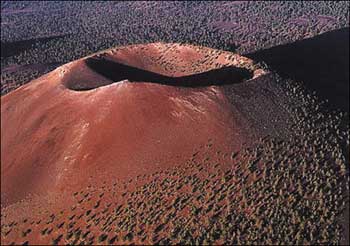Research erupting from Northern Arizona University is shedding light on the life and science among the shadows of both small and big volcanoes.
“Geological hazards are growing to be more important as we have more humans on Earth and they live in increasingly risky places,” says Michael Ort, an associate professor in environmental sciences and geology. “It is worthwhile understanding how volcanoes work and monitoring the more active ones in case they do something.”
Findings from two NAU volcanologists are flowing into scientific publications with a worldwide reach.
The big effects of small volcanoes Michael Ort’s research reveals how smaller cinder-cone, or scoria-cone, volcanoes that effuse at low volume, have huge impacts on society. | New science for detecting large Supervolcanoes are no match for Mary Reid, who is discovering ways to detect their eruptions possibly thousands of years before they erupt. |





